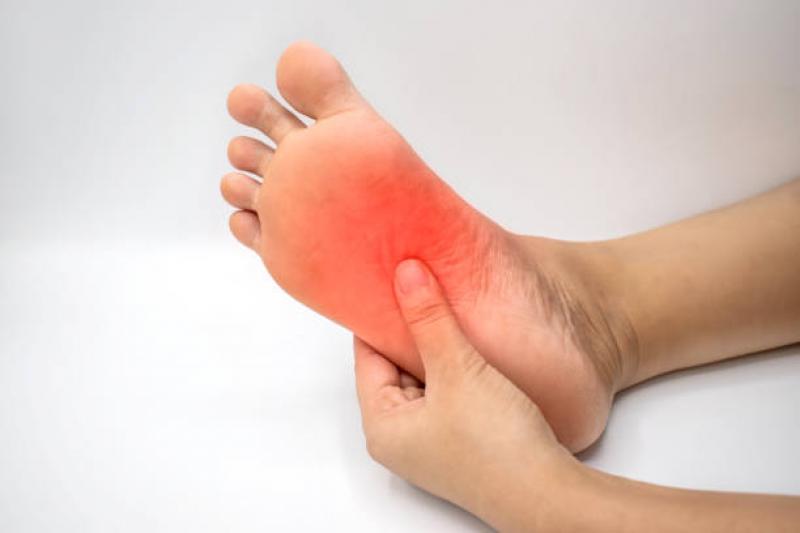Neuropathic pain is a complex and debilitating condition that affects millions of people in the United States. It arises from damage or dysfunction in the nervous system, leading to abnormal signaling and the perception of pain without any apparent injury or stimulus. Managing neuropathic pain poses significant challenges for both patients and healthcare providers, but advancements in research and treatment options offer hope for improved pain relief and better quality of life. This comprehensive exploration of U.S. neuropathic pain treatment delves into the condition's underlying mechanisms, current management strategies, challenges faced by patients and clinicians, and the latest advancements in the field.
Understanding Neuropathic Pain
Neuropathic pain is distinct from nociceptive pain, which results from the activation of pain receptors in response to tissue damage or injury. In neuropathic pain, the nervous system itself becomes the source of pain. Nerve damage, nerve compression, and alterations in the processing of pain signals contribute to the development of neuropathic pain.
Common conditions that can lead to neuropathic pain include diabetic neuropathy, post-herpetic neuralgia (shingles), trigeminal neuralgia, carpal tunnel syndrome, and nerve injuries.
Current Neuropathic Pain Management Strategies
The management of neuropathic pain is multifaceted, involving a combination of pharmacological and non-pharmacological approaches. Some of the commonly used treatment strategies include:
-
Medications: Antidepressants, anticonvulsants, and opioids are among the medications frequently prescribed to manage neuropathic pain. Tricyclic antidepressants, such as amitriptyline and nortriptyline, and anticonvulsants, like gabapentin and pregabalin, are often considered first-line treatments.
-
Topical Medications: Topical agents, such as lidocaine patches and capsaicin cream, can provide localized pain relief for some patients.
-
Physical Therapy: Physical therapy and occupational therapy can help improve function and reduce pain by addressing underlying physical issues.
-
Nerve Blocks and Injections: Local anesthetic nerve blocks and corticosteroid injections may be used to target specific nerve pathways and provide temporary relief.
-
Spinal Cord Stimulation: For refractory cases, spinal cord stimulation involves the placement of electrodes along the spinal cord to disrupt pain signals, providing relief for certain individuals.
-
Cognitive Behavioral Therapy (CBT): CBT helps patients manage pain by addressing negative thought patterns and coping with pain-related challenges.
Challenges in Neuropathic Pain Management
Despite the availability of various treatment options, neuropathic pain management presents several challenges:
-
Individual Variability: Neuropathic pain is highly individualized, and what works for one patient may not be effective for another. Identifying the most suitable treatment for each patient can be a trial-and-error process.
-
Limited Efficacy of Current Medications: Some patients may experience only partial pain relief with existing medications, and side effects can also be a concern.
-
Opioid Crisis: The use of opioids for neuropathic pain management is controversial due to the risk of dependence, addiction, and adverse effects.
-
Patient Compliance: Adherence to treatment plans can be challenging, and patients may discontinue medications prematurely due to side effects or lack of perceived benefit.
-
Underdiagnosis and Misdiagnosis: Neuropathic pain is often underdiagnosed or misdiagnosed, leading to delays in appropriate treatment and management.
Advancements in Neuropathic Pain Treatment
Despite the challenges, ongoing research and advancements offer hope for improved neuropathic pain management:
-
Novel Medications: Researchers are investigating new medications and treatment targets to improve pain relief and reduce side effects.
-
Gene Therapy: Gene therapy approaches show promise in modifying nerve signaling and potentially providing long-lasting pain relief.
-
Non-Invasive Neuromodulation: Advancements in non-invasive neuromodulation techniques, such as transcranial magnetic stimulation (TMS) and transcutaneous electrical nerve stimulation (TENS), offer new avenues for pain management without invasive procedures.
-
Targeted Drug Delivery: Intrathecal drug delivery systems, which deliver medications directly to the spinal fluid, may provide more effective pain relief with lower doses and reduced side effects.
-
Regenerative Medicine: Stem cell therapies and regenerative approaches hold the potential to repair damaged nerves and promote nerve regeneration, providing long-term pain relief.
-
Digital Health Solutions: Mobile apps and wearable devices are being developed to help patients track and manage their pain, monitor treatment progress, and access support resources.
The Role of Multidisciplinary Care
A multidisciplinary approach is essential for comprehensive neuropathic pain management. Collaboration between primary care providers, pain specialists, neurologists, physical therapists, psychologists, and other healthcare professionals ensures that patients receive individualized and holistic care.
Conclusion
Neuropathic pain poses complex challenges for both patients and healthcare providers, but ongoing research and advancements offer hope for improved pain relief and quality of life. A combination of pharmacological and non-pharmacological approaches, tailored to each patient's needs, is crucial for effective neuropathic pain management. With continued research and innovation, the landscape of neuropathic pain treatment in the United States is set to evolve, providing new hope and options for those living with this debilitating condition.
